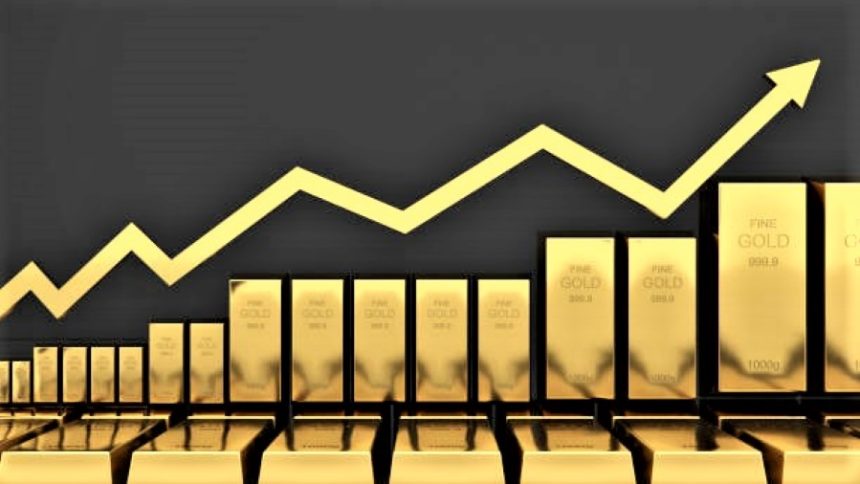Gold Holds Firm as FOMC Meeting Looms: Safe-Haven Demand Reignited by Geopolitical Uncertainty.
Gold prices (XAUUSD) are struggling to gain strong upside traction on Monday but remain underpinned by fresh safe-haven demand driven by deteriorating geopolitical conditions in Eastern Europe and the Middle East. The precious metal hovers around a firm support near $3,200 after rebounding from last week’s lows, as investors exercise caution ahead of the critical two-day Federal Open Market Committee (FOMC) policy meeting, beginning Tuesday.
Although the precious metal faces some resistance on its way up, renewed geopolitical risks and a modestly weaker US Dollar have rekindled demand for gold as a store of value. Meanwhile, US President Donald Trump’s erratic trade policies and their ripple effects across global markets are contributing to market instability, thereby adding to gold’s appeal.
XAU Supported by a Confluence of Geopolitical Flashpoints
The geopolitical landscape remains fraught with tension. Over the weekend, Russian President Vladimir Putin reiterated his country’s resolve to end the Ukraine conflict “on its own terms.” While Putin has announced a unilateral ceasefire between May 8–10, Moscow has rejected joint proposals by the US and Ukraine for a longer, unconditional 30-day ceasefire. This sends mixed signals to global markets and intensifies fears of continued instability in the region.
Meanwhile, in the Middle East, hostilities have escalated following a ballistic missile strike by Yemen’s Houthi rebels on Israel’s Ben Gurion International Airport. Israeli Prime Minister Benjamin Netanyahu promised retaliation and explicitly warned Iran of consequences. In response, Iran’s Defense Minister, Aziz Nasirzadeh, issued a stern warning that Tehran would retaliate strongly if provoked. These developments signal a potential broadening of the conflict, prompting investors to seek refuge in gold, which traditionally performs well during times of crisis.
Such geopolitical tremors invariably revive interest in safe-haven assets. Historically, gold thrives during periods of heightened uncertainty, and this time is no exception. As risk sentiment deteriorates, investors reduce exposure to equities and riskier assets, redirecting capital flows toward the safety of precious metals.
Trump’s Trade Moves Shake Markets, Lend Support to Gold
Adding another layer of uncertainty is US President Donald Trump’s unexpected announcement of a 100% tariff on foreign films. The policy, widely seen as a symbolic escalation of his broader protectionist stance, sent shockwaves through the media industry and beyond. Markets are on edge as such moves could signal the beginning of broader and more aggressive tariff impositions, reigniting fears of global trade disruptions.
Trump’s unpredictable policy decisions have historically had a destabilizing effect on markets, and the latest tariff move is no exception. Investors are now recalibrating their risk assessments, boosting demand for traditional hedges like gold. The move also clouds the outlook for the US Dollar, which, despite robust recent labor market data, remains subdued amid growing economic and political uncertainty.
Fed Policy in Focus: Markets Eye FOMC Decision for Next XAU Catalyst
While geopolitical concerns and Trump’s policy actions dominate headlines, the primary event risk for gold traders this week remains the FOMC decision on Wednesday. The Federal Reserve is expected to maintain its benchmark rate at current levels, but market participants will closely parse Chairman Jerome Powell’s commentary and the accompanying policy statement for any dovish or hawkish tilt.
Recent US economic data has complicated the Fed’s policy outlook. Nonfarm Payrolls released on Friday beat expectations, with the US economy adding 177,000 jobs in April, compared to the anticipated 130,000. Moreover, the unemployment rate held steady at 4.2%, indicating continued labor market resilience.
This data has led markets to reassess the probability of a rate cut in June. Earlier expectations of imminent easing have been tempered somewhat, leading to a slight pullback in gold. However, with inflation still not firmly anchored at the Fed’s 2% target and global risks mounting, the central bank may adopt a wait-and-see approach, which could keep real yields low and gold prices supported.
Additionally, several Fed officials are slated to speak later this week, and their comments could further shape rate expectations and influence the Dollar, thereby impacting gold.
US Dollar Weakness Supports Gold Amid Economic Ambiguity
Despite the strength in US jobs data, the US Dollar remains depressed below the multi-week highs it touched last Thursday. Market uncertainty stemming from Trump’s latest tariff announcements has led investors to adopt a more defensive stance, limiting demand for the greenback.
The lack of a decisive Dollar rebound suggests that traders remain cautious about the broader US economic outlook. With consumer sentiment mixed, inflation expectations softening, and external risks rising, the greenback lacks strong directional conviction. This continues to act as a tailwind for gold, as a weaker USD reduces the opportunity cost of holding non-yielding assets like bullion.
Other Catalysts: PMI Data and Market Sentiment
Apart from the FOMC and geopolitical tensions, Monday’s US ISM Services PMI data and ongoing trade developments are likely to influence near-term gold price action. A weaker-than-expected services PMI print could reinforce the Fed’s cautious approach, supporting gold. Conversely, a strong print may temporarily weigh on XAU/USD by boosting the Dollar.
Nevertheless, with a cautious market mood prevailing, traders are likely to remain on the sidelines ahead of Wednesday’s FOMC outcome. This translates to rangebound action for gold in the near term, with intermittent spikes likely as headlines unfold.
Technical Outlook: Gold Price Faces Resistance but Holds Key Support
From a technical standpoint, gold (XAU/USD) remains comfortably above the 100-day simple moving average (SMA), with immediate support near $3,180–$3,200 zone. A sustained break below this level could expose the metal to the next support at $3,150.
On the upside, gold faces stiff resistance near $3,235, followed by the $3,250 psychological barrier. A clear breakout above this region could pave the way for a retest of April’s highs near $3,280.
Momentum indicators such as the Relative Strength Index (RSI) are neutral, suggesting a period of consolidation may continue until a decisive catalyst emerges, most likely from the FOMC decision or major geopolitical escalations.
Conclusion: FOMC and Geopolitical Risks Keep Gold in Focus
As traders brace for this week’s FOMC policy decision, gold remains in a holding pattern, supported by a blend of safe-haven flows, US Dollar weakness, and global geopolitical instability. With inflation still under watch, trade tensions reigniting, and a fragile global economy, gold remains a preferred hedge in uncertain times.
Unless the Fed adopts a markedly hawkish tone, the yellow metal may continue to enjoy buying interest, particularly if geopolitical tensions escalate further. In the short term, traders will keep a close eye on data releases, Fed rhetoric, and breaking headlines for clues on gold’s next directional move.
[faq-schema id=”39502″]









